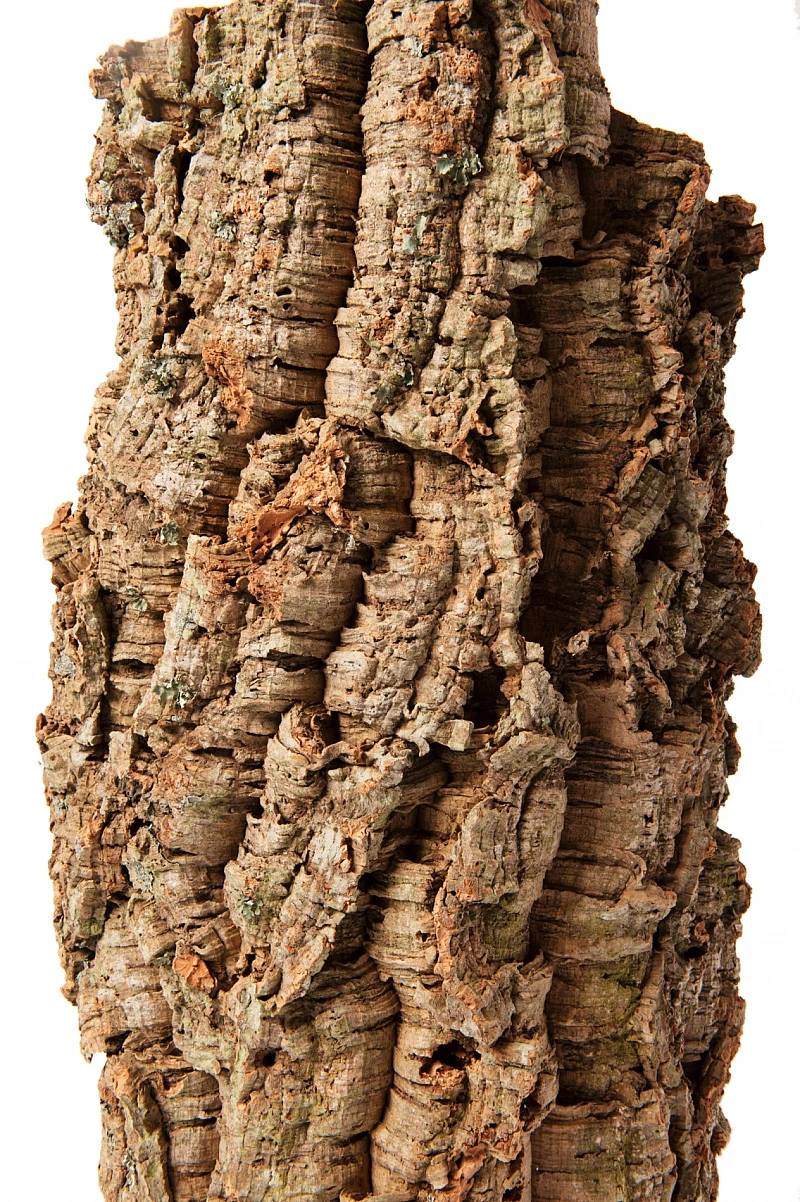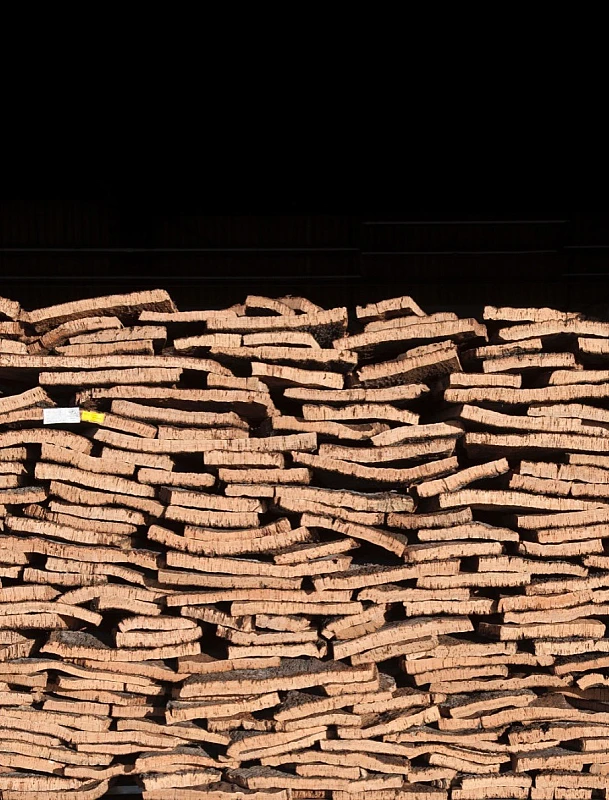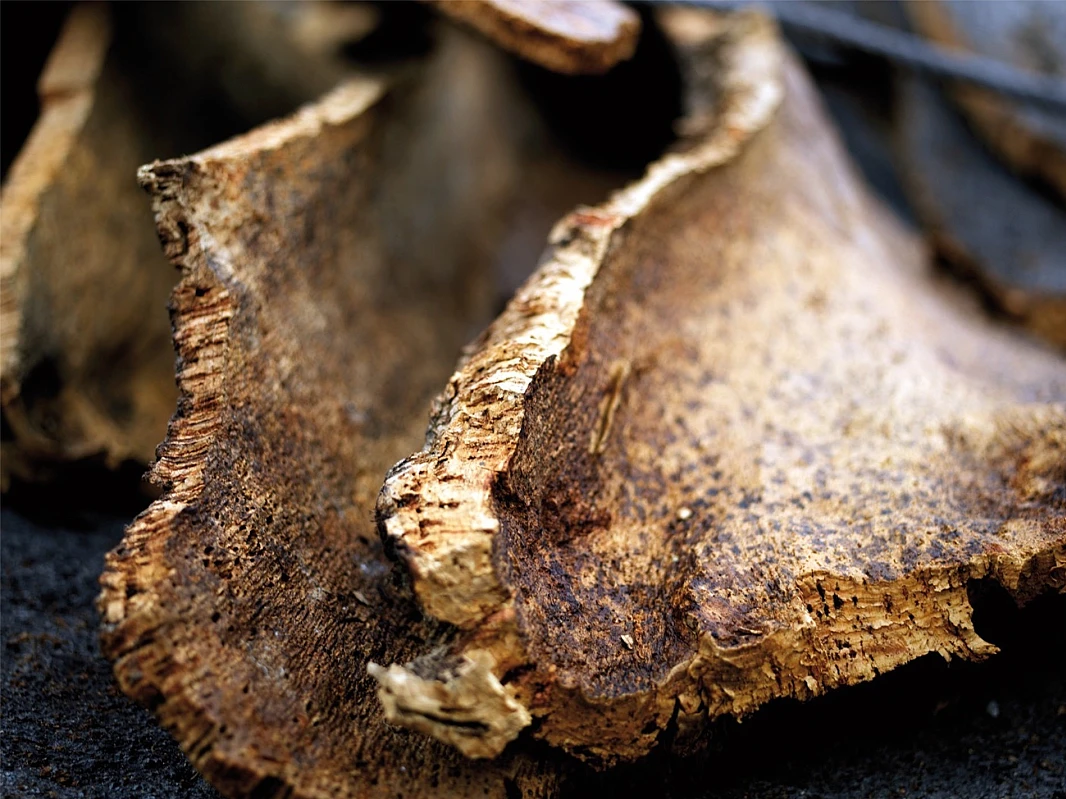- Cork
- Why Cork

Why Cork Naturally Mind-Blowing
Cork is the bark of the cork oak (Quercus Suber L.), an ancient tree that grows in the Mediterranean Basin, forming the famous Montados.
Harvested every nine years without damaging or felling the cork oak tree, cork is one of nature's greatest wonders. It is a completely natural plant tissue and is therefore biodegradable. Its ability to retain CO2 makes cork an example of sustainability and a powerful ally against climate change, contributing significantly to reducing carbon dioxide emissions.
With its unique chemical composition, cork is one of the most incredible materials on the planet. Observed under a microscope, cork has a structure similar to that of a beehive, where each cell is shaped like a pentagonal or hexagonal prism. Each cubic centimetre of cork contains around 40 million cells.
Around 45 per cent of cork is made up of suberin. Other components such as lignin, polysaccharides, tannins and ceroids are also present, offering a huge range of qualities. Its unique chemical composition makes it essential in cork stoppers, the most famous product derived from this material.
Cork has properties that make it ideal for various applications, especially thermal and acoustic insulation, resistance to high temperatures and elasticity. Its lightness, comfort and soft touch make it a favourite material in various industries.
In addition, it is naturally hypoallergenic and resistant to compression, characteristics that make it essential for the production of cork stoppers , where Amorim Cork leads the way, offering the widest portfolio on the market.
Cork is the bark of the cork oak (Quercus Suber L.), an ancient tree that grows in the Mediterranean Basin, forming the famous Montados.
Harvested every nine years without damaging or felling the cork oak tree, cork is one of nature's greatest wonders. It is a completely natural plant tissue and is therefore biodegradable. Its ability to retain CO2 makes cork an example of sustainability and a powerful ally against climate change, contributing significantly to reducing carbon dioxide emissions.
With its unique chemical composition, cork is one of the most incredible materials on the planet. Observed under a microscope, cork has a structure similar to that of a beehive, where each cell is shaped like a pentagonal or hexagonal prism. Each cubic centimetre of cork contains around 40 million cells.
Around 45 per cent of cork is made up of suberin. Other components such as lignin, polysaccharides, tannins and ceroids are also present, offering a huge range of qualities. Its unique chemical composition makes it essential in cork stoppers, the most famous product derived from this material.
Cork has properties that make it ideal for various applications, especially thermal and acoustic insulation, resistance to high temperatures and elasticity. Its lightness, comfort and soft touch make it a favourite material in various industries.
In addition, it is naturally hypoallergenic and resistant to compression, characteristics that make it essential for the production of cork stoppers , where Amorim Cork leads the way, offering the widest portfolio on the market.

Chemical Composition of Cork
- 45% Suberin
- 27% Lignin
- 12% Cellulose, Waxes, other Polysaccharides
- 6% Tannins
- 6% Ceroids
Cork Properties
- Thermal and acoustic insulation
- Impermeability to liquids and gases
- Resistance to fire and high temperatures
- High-friction resistance
- Elasticity, compressibility, and resilience
- Hypoallergenic
- Comfortable and soft to the touch
- Lightness
